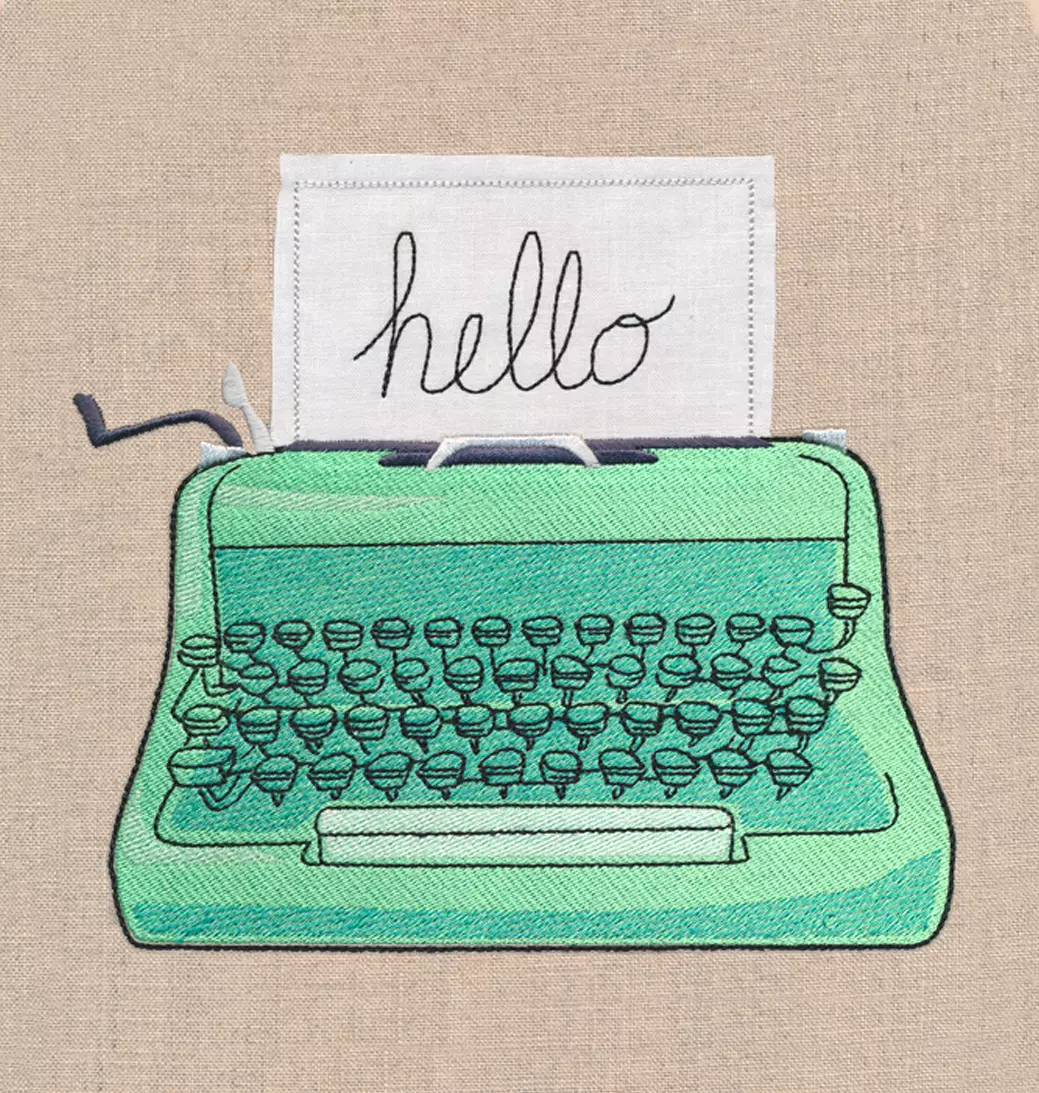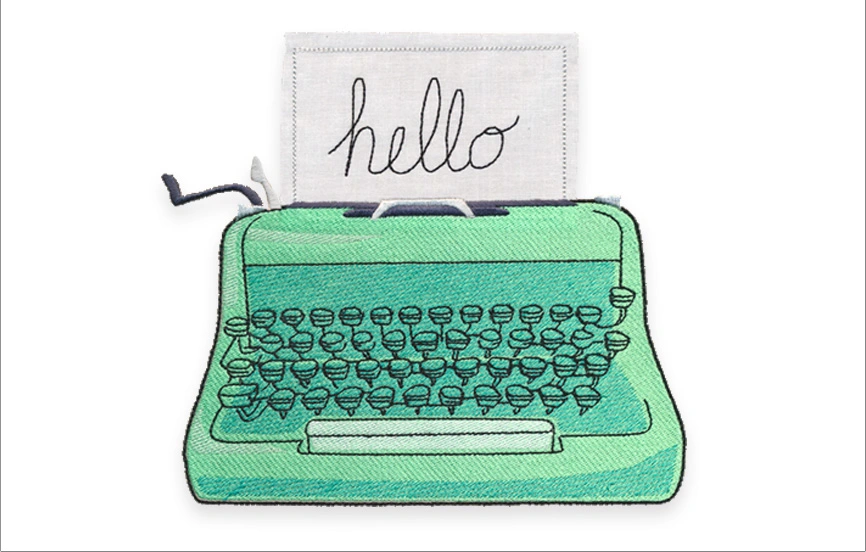Designs Used

This week’s project is actually the product of a customer request (I hear you, I do!) for a checkbook cover that didn’t conjure up an image of “little old ladies crocheting toilet paper roll covers.” Not that crocheted toilet paper roll covers couldn’t be neat, I’m just not sure what they’re for. I guess toilet paper is less offensive when combined with doilies. Either way, I thought a checkbook cover would be a great idea!
My current checkbook cover is the standard bank one that came with my checks. Black, boring, and plastic. If you have a plastic checkbook cover already, keep it around. It’s useful for this project. That didn’t stop craft bunny from punishing its utilitarian ugliness, however. Once I extracted my checks from the fluffy jaws of death, I was set to begin...
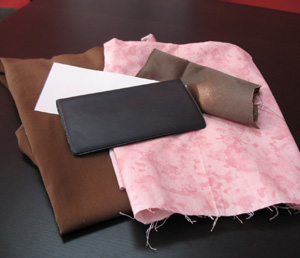
To make your newfangled checkbook cover, you’ll need your cover fabric, some lining fabric, and a few bits of fabric for appliqué. I used some of my lining fabric as part of my appliqué, so it would all coordinate. You’ll also want some tag board or thin cardboard, and a bit of spray fixative.
Have your checks around, because we’ll be using them to make some measurements. If you have one of those awful plastic-y bank covers for your checks, keep that too.
These instructions are for machine embroidery, but hand embroiderers can follow along ... just whip out your needle and thread when you see an embroidery machine and hand-stitch the pretty birds instead.
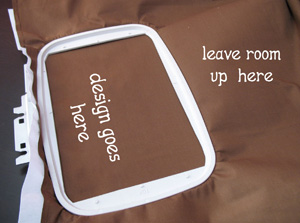
First thing we’re going to do is our embroidery. I made a special lovebirds design that was made to fit on checkbook covers. You can use any design as long as it’s smaller than your checkbook cover, but sometimes it’s nice to have one specially made.
Hoop up your fabric with some stabilizer. The design will go at the bottom of the fabric, with enough left over above it to fold over your checks. I left lots of excess just to be sure.
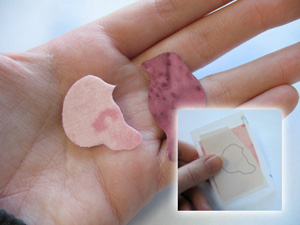
If you’re using the lovebirds design, you’ll need to cut out your little appliqué pieces. I backed my fabric with a little bit of stabilizer, and then used a bit of adhesive to stick my dieline on top of it. Cut out your little birdies carefully.
If you’re a little hazy on the finer points of appliqué, you can check out this tutorial here.
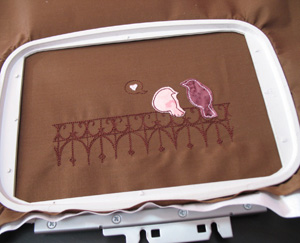
Here are the lovebirdies all finished and pretty. Once your design is done sewing, remove it from the hoop, and turn it over so the stabilizer side is up.
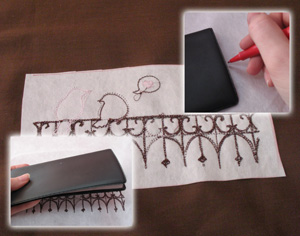
We don’t want a totally floppy checkbook cover, so we’re going to use the stabilizer to help give our checkbook cover a bit of sturdiness.
Place your checks, or your checkbook cover, on top of your design on the back, and trace around it. If you’re using the cover, trace around it normally. If you’re using just the checks, add a little bit of space around the checks so it will cover it up properly. Once you like your tracing (make sure it’s level with the embroidery) cut it out, leaving behind a neat rectangle.
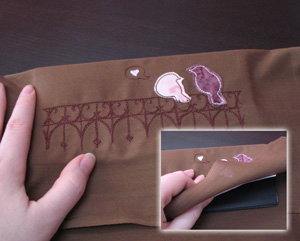
Fold your fabric over your checkbook, centering the design where you want it.
Press down on your fabric so you can clearly see the defined edge of the checkbook.

Using a marker or fabric pen, trace around the checkbook shape, adding about 1/2 inch for seam allowance. If you’re simply tracing around your checks, you’ll want to add a little bit more to make sure after you sew it, it overlaps your checks a little bit. I pinned my fabric in place to stop it shifting while I worked.
Cut out your cover, snipping through both layers at once.
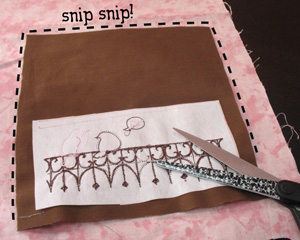
Lay your newly cut rectangle on top of your lining fabric, right sides together. Pin the two to each other and cut out around your checkbook rectangle. Now you should be all set to sew the two together.
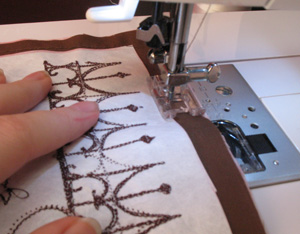
Sew a seam around three sides of your rectangle, leaving the side opposite the embroidery open. Sew the seam in accordance with the measurements you added earlier. Mine was 1/2 inch. Once you're finished sewing, turn your rectangle right side out and push out the corners.
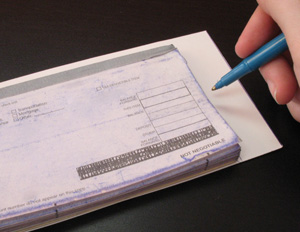
Before we close up the other side, we’re going to make our checkbook cover even sturdier. Take just your checks this time, and trace around them on a piece of tag board. Add a little bit of width on the sides so it’s just wide enough to fit in your rectangle.
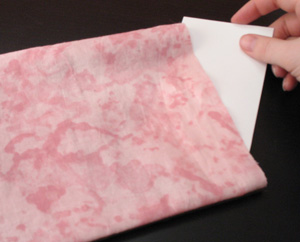
Take this piece of tag board and slip it inside, pushing it flush with the embroidery edge. When we sew the final seam, it will stitch the tag board in place. This will help make sure you have a nice firm cover for your checks.
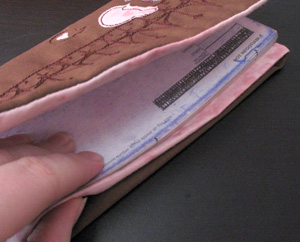
Fold your checks inside your unfinished cover. Now is a good time to check that your tagboard insert isn’t too tall or bulky. When you have it folded to where you like, fold the raw edges of the open side in.
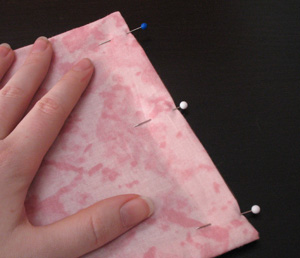
Once the raw edges are folded in where you want them, pin them in place. You can set this piece aside for now, because before we sew the last seam we’re going to make the inner pocket for the checks.

Trace around your checks onto another piece of tag board. We need this piece to be exactly as wide as your cover, so before you cut it out, line it up with your cover and add the extra length.
Cut out your new tag board rectangle.
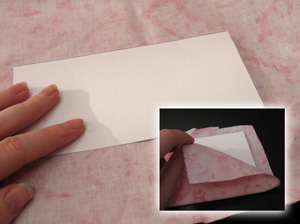
Take your rectangle and another piece of the fabric you used for the lining. Cut out a piece of the fabric that’s big enough to cover your tag board completely, with a little extra around the edges.
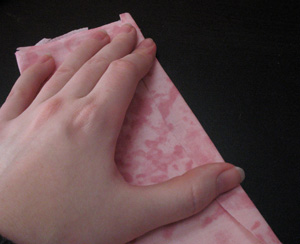
Grab your spray fixative, and spray both sides of your tag board. Press it firmly onto your fabric, then fold your fabric over it. When you’re done you’ll want one edge to fold over the back by just a bit, like the photo. The spray fix should help keep the fabric smooth and secure.
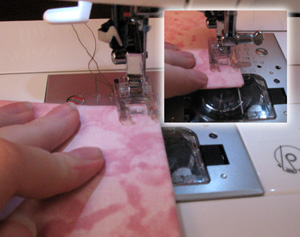
We’re going to sew a seam along the folded edge side in order to secure the fabric to the tag board. Stitch your tagboard under your sewing machine with the folded edge underneath.
We want nice clean edges here, so before you start the seam, cleanly tuck the sides under to the side that already has the fold, and hold them in place as you sew.
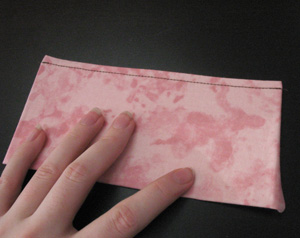
This is what you should have when you’re done. The sides aren’t completely secured under, but they will be in a moment. The important part is that the top is nice and crisp. Now we’re going to attach our sturdy pocket to the cover. Before you begin sewing, make sure your bobbin and thread match your pretty cover.
Ick, looks like I broke a nail. Was that an especially girly thing to say? Forget I said it. Ignore the nails.
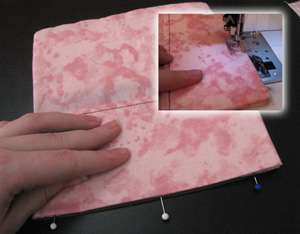
Line your pocket up with the edges of the cover. You should be placing it over the side with the pins. There’s no real need to pin the pocket in place – it’s sturdy enough that you should be able to hold it on when it’s sewing, and we don’t want to poke holes in our tag board anyway.
Starting along the raw pinned edge, sew a seam to close the cover and secure the pocket to it, and then continue all the way around the rectangle. Make sure that when you come to the other side, you like the placement of your other tag board inset, because the stitching will probably secure it in place.
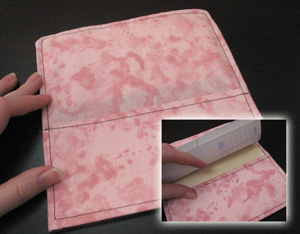
And there you have it! Slide the back card of your checks into the sturdy little pocket, and close up your cover.
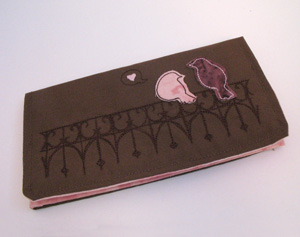
You can finally toss that ugly hunk of plastic away, because you have a beautiful customized embroidered cover for your checks now.
The tag board insets keep it from being too floppy, but the fabric makes it a much softer cover than plastic. You may laugh, but I stabbed myself on the edge of the old plastic cover more than once in my zeal to whip out my checkbook.
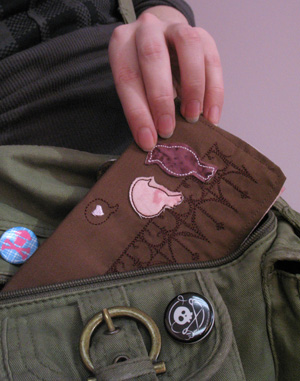
Stash your adorable little checkbook away and now any time you’re indulging in a little retail therapy, you have an excuse to whip out some beautiful handmade stitching.
“Oh, this old thing? No, no, I didn’t buy it, I stitched it myself!” See how many people believe you.
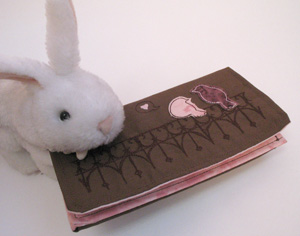
After a thorough taste test, craft bunny approves. Enjoy your adorable new checkbook cover, and try out all sorts of designs for it! Plus our little lovebirds don’t always have to live on a checkbook. Try them out for all sorts of other projects!

